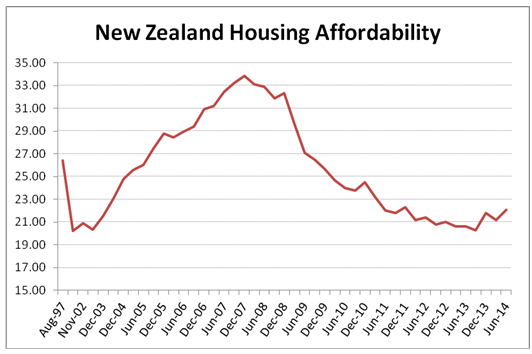With house prices and interest rates increasing, it is no surprise that housing affordability is falling. This is likely to continue for a number of years and was confirmed by the latest Home Affordability report by Massey University’s Real Estate Analysis Unit.
The unit’s latest Home Affordability Report covers the quarter from March to May 2014. The report’s author, Professor Bob Hargreaves, says the overall decrease in affordability is no surprise.
“The average weekly wage increase of $34.53 over the past year was not enough to offset a $38,000 increase in the median house price,” Professor Hargreaves says.
“This deterioration in affordability is likely to continue as recent interest rate increases are incorporated into the debt servicing costs for home mortgages.”
On a quarterly basis, the national affordability index deteriorated by 4.5 per cent, compared with a 2.8 per cent improvement in the previous quarter.
Auckland was, unsurprisingly, the least affordable region followed by Central Otago/Lakes and Canterbury. Southland retained its place as the country’s most affordable region, followed by ManawatÅ«/Wanganui and Taranaki.
Professor Hargreaves says one of the most striking trends is the growing gap in affordability between larger urban centres and provincial towns, caused mainly by the differences in house prices between regions.
When viewed on an annual basis, there were actually five regions that showed improved affordability over the past 12 months: Southland, Taranaki, Manawatū/Wanganui, Nelson and Otago.
The following graph shows how affordability levels are still quite low compared to the heights of previous property cycles.

The full report covering all regions can be viewed here
Need help or
support?